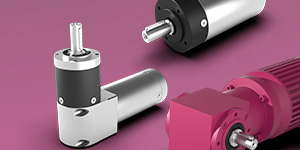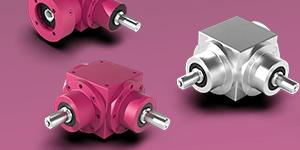Understand the basics, avoid mistakes, and increase the efficiency of your plants.
Why is an accurate performance calculation so important for my industrial plant?
A precise performance calculation is crucial to minimize energy losses, which increases plant efficiency und significantly reduce operating costs. Even small miscalculations can lead to significant additional costs.
What basic formulas of performance calculation should I know?
For direct current (DC), the formula is P = U * I. For alternating current (AC), as commonly used in industry, the formula for real power is P = U * I * cos(φ), where the power factor cos(φ) is critical.
What is the difference between useful power and loss power?
Useful power is the energy actually used for the work process. Loss power , on the other hand, is energy that is usually converted into unwanted heat and reduces system efficiency..
Why are safety margins important in performance calculation of drives?
Safety margins, often around 25% above the rated power, protect your drive components from unexpected load peaks und and extend their lifespan, preventing early failures., wodurch Frühausfälle vermieden werden.
What is meant by reactive power and why is the power factor (cos φ) relevant?
Reactive power (measured in VAR) does no work but burdens the grid. The power factor (cos φ) indicates the ratio of real to apparent power. A low cos(φ) means higher current draw and energy costs; utilities often charge additional costs for values below 0.9.
How does the conductor cross-section affect power transmission?
Ein a correctly sized conductor cross-section is crucial for safety and efficiency. A too small cross-section leads to overheating and high voltage drop (power loss), while a too large cross-section incurs unnecessary material costs.
What influence do environmental conditions have on motor performance?
Factors such as ambient temperature and installation height can significantly affect the rated power of a motor. For example, a motor at 40°C ambient temperature can lose up to 15% of its rated power, if no adapted cooling is provided.
How can ATEK Drive Solutions assist with performance calculation?
ATEK Drive Solutions offers comprehensive consulting and supports the design of the entire drive train. With our modular system , we find the optimal combination of gear boxes, motor, and brake for your specific application and ensure efficient power transmission.
A precise performance calculation is the foundation for efficient and cost-effective drive systems, as even a 5% misestimation with a 50 kW motor can lead to four-digit annual additional costs. .
Considering useful, loss, and maximum power as well as adhering to safety margins (around 25%) is crucial to avoid over-dimensioning, which extend the lifespan of components and ensure safe continuous operation. Optimizing the
power factor (cos φ) Leistungsfaktors (cos φ) and the correct sizing of conductor cross-sections minimizes energy losses, reduces operating costs, and can reduce the current consumption by up to 30%,which improves grid stability and plant efficiency.Discover the key formulas, practical tips, and expert knowledge for performance calculation in drive technology. Optimize your systems and save costs!
Performance calculation is the key to efficient drive systems. Whether gear boxes, brakes, or motors – we will show you how to calculate performance correctly and optimally design your plants. Do you have questions? Contact us now Contact with us now!
Do you need support in the performance calculation of your drive systems? We are happy to help!
Get a free consultation now!
Introduction to performance calculation
Performance calculation made easy: This is how you optimize your drive systems. An informed determination of performance requirements avoids mistakes, increases plant efficiency, and reduces operating costs through system optimization.
Why is an accurate calculation of power crucial?
Inaccuracies in design cause energy losses. Exact performance calculation is the foundation of efficient, safe drive systems. A 5% misestimation (50 kW motor) can mean four-digit annual additional costs.
The role of determining the power in system design
Initial calculation strongly impacts lifecycle costs. Correct performance calculation minimizes initial energy consumption and wear. ATEK Drive Solutions considers this in drive train designs, extending maintenance intervals.
Common misunderstandings and their avoidance
Rough power estimates often fall short. Many underestimate complexity and influences such as partial load or ambient temperatures. Leads to over-dimensioning; accurate analysis avoids this.Basics of performance calculation: Understanding formulas and units
The basics: Direct current (DC) and alternating current (AC) formulas
DC/AC motors have different power formulas. DC: P=U*I. AC (industry): P=U*I*cos(φ). Without cos(φ), up to 20% real power error is possible. An AC motor (400V,10A,cos(φ)0.85) requires 3.4kW. Details: Understanding electric motor power.
Ohm’s law as a tool for power determination
Ohm’s law (U=R*I) allows alternative calculations (P=I²*R; P=U²/R). P=I²*R shows: Current greatly influences loss power (heat) – doubling the current quadruples it. A heating element (2Ω,5A) generates 50W.
Important units: From watts to horsepower
Standard unit: watts (W), often kilowatts (kW). 1HP≈735.5W. Precise conversion integrates old machine power into new plans. A 10HP motor has about 7.355kW. Important for Calculating three-phase power.Analyze useful power, loss power, and critical maximum power
Useful power versus loss power: Where does the energy go?
Useful power is productive energy, loss power is usually heat. A drive (85% efficiency) converts 15% of electrical power into waste heat. A 20kW motor produces 3kW loss (costs, disposal). Note the real power factor.
- Distinction between useful power (productive energy) and loss power (mostly heat).
- Understanding that efficiency determines the proportion of electrical power converted into waste heat (e.g., 15% loss at 85% efficiency).
- Considering the costs and the necessity to dispose of loss heat.
- Knowledge that maximum power represents a short-term limit and is not designed for continuous operation.
- Recommendation to keep the operating load for permanent and safe operation about 20-30% below the specified maximum power.
- Importance of safety margins (typically around 25% above the rated power) to protect against load peaks and extend lifespan.
- Avoiding early failures by planning sufficient safety margins.
Maximum power: Know the limits and avoid damage
Maximum power is a short-term load limit, not continuous power. Safe continuous operation requires operating loads 20-30% below maximum power. A servo motor (temporarily 5Nm) should run continuously at a max. of 3.5Nm.
Safety margins: The key to longevity
Safety margins protect against load peaks and extend lifespan. Missing margins cause early failures; about 25% on rated power are common. For an 8kW demand, a ≥10kW motor makes sense for kW to ampere three-phase.Mastering reactive power and power factor correction for AC systems
Reactive power (Q): The invisible load in the grid
Reactive power (VAR) in the AC grid does no work, it arises from inductive/capacitive loads. It swings, burdening grid components. Reactive power increases current, causing transmission losses. A motor can for example absorb 2kVAR, unnecessarily increasing current.
The power factor (cos φ): A measure of efficiency
Power factor cos(φ) (P/S) measures energy efficiency. Ideal:1; <1 indicates reactive power. Utilities often charge additional costs for cos(φ)<0.9. A 100kW system (cos(φ)0.7) needs about 143kVA; at 0.95 only about 105kVA. Optimizing the power factor cos phi is worth it.
Power factor correction: Reducing costs, increasing efficiency
Compensation capacitors improve cos(φ), saving energy by counteracting inductive reactive power. Correction reduces current draw by up to 30%, extends lifespan. A 50kVAR battery can raise cos(φ) from 0.75 to >0.92.Performance calculation in drive technology: Applying theory practically
Application examples: From conveyors to machine tools
Conveyors: Power for acceleration, friction, lift. Machine tools: Cutting power. ATEK Drive Solutions supports with a modular system for precise adaptation (gear boxes, motor, brake), e.g., packaging machine (2.2kW). Die Calculating motor power is central.
- Die Performance calculation is specific to the application, e.g., in conveyors (acceleration, friction, lift) or machine tools (cutting power).
- Modular systems, such as those from ATEK Drive Solutions, enable precise adaptation of components like gear boxes, motor, and brake to the respective application.
- Tolerances in system components must be taken into account, as they can influence overall performance and efficiency. Performance calculation berücksichtigt werden, da sie die Gesamtleistung und Effizienz beeinflussen können.
- Environmental conditions such as temperature and installation height have a significant impact; for example, a motor can lose up to 15% of its rated power at 40°C if no cooling adjustment is made.
- Power measurement is done by recording voltage (connected in parallel) and current (connected in series), and additionally the phase angle for AC systems.
- Modern measuring devices offer high accuracy (often under 1%), however, the correct application of sensors is crucial for reliable results.
- Measurement errors, for example due to incorrect selection of current transformers, can lead to significant deviations (over 5%).
Influence of tolerances and environmental conditions
Tolerances, ambient temperature, installation height affect power/efficiency. A motor (optimal at 20°C) can lose up to 15% of its rated power at 40°C without a cooling adjustment. This should be considered.
Measurement methods and their accuracy in practice
Power measurement: Voltage (parallel), current (series), for AC the phase angle. Modern devices: <1% accuracy; correct sensor application is crucial. Incorrect choice of transformers: >5% error. A related process is the Calculating torque for the motor.Cable sizing: correctly determining cross-section and voltage drop
Choose the right cable cross-section: safety and efficiency
Correct cable cross-section is critical. Too small: overheating, voltage drop, fire hazard. Too large: material costs. A suitable cross-section (e.g. 4mm² instead of 2.5mm²) reduces voltage drop by 30-40%, improves efficiency. Prerequisite: Calculate the current draw of a three-phase motor can.
Current carrying capacity: More than just the rated current
Current carrying capacity depends on material, installation type, ambient temperature, cable bundling. It can decrease by up to 50% (poor ventilation, bundling). A 6mm² copper cable: optimal 40A, unfavorable only 20A.
Voltage drop: Minimizing creeping power loss
Voltage drop should be <3% (meter-consumer). Higher: energy loss, device malfunctions. At 400V/5% voltage drop only 380V (motors: torque loss, overheating). Correct Calculate power at 400V helps.
A precise calculation of power optimizes drive systems and reduces operating costs. The application of these fundamentals for power determination increases the efficiency and reliability of systems. Contact ATEK Drive Solutions for advice and tailored solutions.


